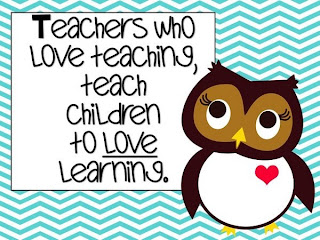
Part 1:
This assignment calls for me to revisit Blog Post #1. In my first blog post, I talked about my aspirations of teaching high school, specifically 11th grade, English. One of my biggest desires is to teach students about writing, grammar, and literature in a way that they can relate to. I want my students to understand that clarity is imperative in all messages. While I would not necessarily change what I wrote in my first blog post, I would certainly add to it now that I have learned about several tools available to my students and my classroom.
In my prior post, I blogged “How will I inspire high school students to view writing and grammar as a vital component of everyday life? I know that I will hear at least one student utter, ‘You know what I meant. So, why do I have to say it correctly?’” I still do not have these answers. And I would predict that I will take a trial and error approach in the beginning. With the expansion of technology, I feel both written and visual communication are a strong part of people’s lives today. This is true for students especially.
With technology being such a large part of students’ lives, I believe we as teachers should take advantage of it. As an English teacher, it can provide a way for me to relate grammar, word choice, clarity, and mechanics to students’ daily lives. I mentioned in my prior post that I would like to have students bring in copies of (school appropriate) texts, letters, emails, and social networking posts from friends. Together, we can read over them and discuss the many ways of interpreting the messages, as well as the correct way of conveying one’s intentions through written language by the utilization of correct grammar, word choice, and syntax. I believe it is seemingly insignificant activities like this that will slowly capture students’ attention. I would like to have a different quirky grammar quote on the board each day. Something like: “Let’s eat Grandma. Let’s eat, Grandma.”
Basically, I want my students to learn in a way that relates to their lives. For the grammar portions of the curriculum, I do not want my students simply completing worksheets. I want them analyzing, examining, and synthesizing. They can look over real life examples and correct and critique. Through the use of technology, students no longer have to rely on examples from textbooks, but can use their own writings, even if these writings are simply text messages. I want my students to understand that all symbols and text are rhetoric and convey some sort of message that we interpret based upon our own knowledge and experiences and that a speaker can give clues through body language. However, an author does not have this option. Therefore, clarity is at utmost importance.
Prior to this class, I had considered personal blogging but had never considered it as a classroom tool. Now, I am extremely interested in the use of blogs in my classroom. I would like to set up a class blog in which students are assigned a free writing session as well as have a specific assignment to reflect on. Blogging is a great way to teach students to write for an audience. There is a big difference in writing for peers, a teacher, and writing for something to be published to the web for academic reasons. If I can teach high school students to adapt to the different needs that such writing entails, I will have achieved a goal of mine and will have provided them with a real life essential. I feel that our writing improves the more we do it. Blogging is a great way to exercise writing and is a wonderful alternative to student dreaded journal writing. It also offers a lot more variety. For instance, students will have the ability to utilize multimedia writing.
Multimedia writing is a tool I would love to use in my classroom. I feel there are many ways to introduce and utilize this concept. The possibilities are endless and right at students’ fingertips. Pardon the clichés, but multimedia writing would be a wonderful way for students to reflect on and explore literature.
During this class, I stumbled upon a website called ReadWriteThink. It offers some wonderful interactive tools for teachers and students. I have bookmarked it and added it to my PLN. One of the tools is a Venn Diagram. These are often used in the classroom to list similarities and differences among characters, works authors and so on. An online interactive one would be much more interesting than filling out a handout.
Overall I want my students to understand that learning never stops and the world that they are growing up in provides a way to access knowledge at all times. I want to teach them to look beyond simple text and to dig deeper and to learn on their own. Technology provides a way of achieving these goals by allowing students to connect and interact with the entire world as opposed to simply a textbook and a classroom full of 30 students
Part 2:













